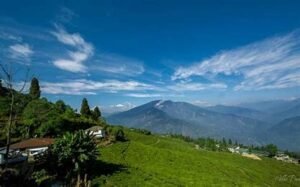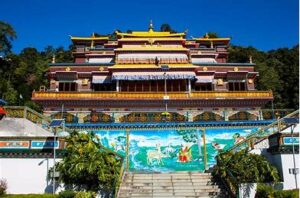The Laitlum Canyons, nestled in the northeastern state of Meghalaya in India, offer stunning views of deep gorges and vast valleys. The region is known for its picturesque landscapes, rich history, and vibrant culture. But there is more to Laitlum than just its natural beauty. This blog aims to explore the cultural, historical, and environmental aspects of the Laitlum Canyons, offering an in-depth look into the way the place has shaped and been shaped by its people.
Historical Roots: Unveiling the Past
The history of Laitlum Canyons is deeply intertwined with the indigenous Khasi tribe, one of the many tribal groups found in Meghalaya. The Khasi people have lived in this region for centuries, maintaining a strong connection to the land and its natural elements. Historically, the Laitlum area was important for its strategic position and natural resources, particularly for the Khasi people, who relied on the terrain for hunting, farming, and spiritual rituals.
Laitlum itself, which means “The End of Hills” in the Khasi language, is an apt name for the area. The region’s history is marked by its role as a central point for trade and communication among various Khasi villages and neighboring regions.
Language and Communication: The Heartbeat of the Khasi People
The Khasi language, spoken by the people of Laitlum, is part of the Austroasiatic language family. It’s a language rich in cultural significance and one of the most widely spoken languages in the region. While Khasi is the primary language used for daily communication, the influence of other languages like Hindi and English can also be observed, particularly in urban areas.
Traditional methods of communication, such as oral storytelling, also play a significant role in preserving the cultural heritage of the Khasi people. Storytelling is used not only to pass down historical events but also to teach moral lessons and preserve the collective identity of the tribe.
Festivals and Celebrations: Vibrancy of Tradition
Festivals and celebrations in Laitlum reflect the deeply rooted traditions of the Khasi people. One of the most significant festivals is Ka Shad Suk Mynsiem, a festival of dance and joy that marks the arrival of spring. It celebrates peace, prosperity, and community spirit. During this festival, people gather to participate in traditional dances and rituals that have been passed down through generations.
Another important celebration is the Lai Haraoba, a festival that honors the gods and spirits of the Khasi pantheon. The festival includes music, dance, and sacrifices as a way to seek blessings for a prosperous year ahead. These festivals are not just events but expressions of gratitude and reverence for nature and ancestors.
Arts, Crafts, and Music: A Creative Expression
The artistic traditions of Laitlum are rich and diverse. The Khasi people are known for their intricate weaving and craftsmanship, particularly in the creation of traditional Khasi shawls. These shawls, often made from wool and silk, feature designs that hold deep cultural significance. The weaving process is considered an art form that is passed down through generations.
Music, too, is an essential part of the cultural fabric. Traditional Khasi music, often accompanied by drums and flutes, is used in rituals and celebrations. The “Sutnga”, a traditional dance performed with rhythmic movements, is often performed during community events and festivals, showcasing the people’s connection to their land and heritage.
Cuisine and Culinary Traditions: A Taste of Laitlum
The cuisine of Laitlum, like much of Meghalaya, is simple yet flavorful. Rice, meat, and vegetables form the core of the diet. The Khasi people are known for their unique preparation of meat dishes, particularly pork, which is often cooked with bamboo shoots and fermented fish. Jadoh, a rice dish cooked with meat, is a staple of the region’s cuisine.
In addition to meat dishes, the Khasi people also enjoy a variety of local vegetables, such as spinach and mushrooms. The use of fermented foods, like khar (fermented fish), adds a distinct taste to the cuisine. These dishes are often enjoyed with traditional beverages made from local ingredients, such as “Tungtap”, a fermented rice drink.
Attire and Ornamentation: A Glimpse into Tradition
The traditional attire of the Khasi people is simple but elegant. Men typically wear a “dhoti” and a traditional “khasi tunic” while women wear a “jymphong”, a long dress with a wrap-around skirt. These garments are made from handwoven cloth, showcasing the region’s skill in textile production.
Ornamentation is also important in Khasi culture, with jewelry often made from silver, brass, and other natural materials. These ornaments are worn during festivals, dances, and religious ceremonies. For the Khasi people, these adornments symbolize their connection to nature and their ancestors.
Beliefs and Values: Spiritual Life
The Khasi people follow a set of beliefs that are closely tied to nature and the environment. They believe in a supreme god, U Blei, who is the creator of the universe. However, they also worship a variety of deities associated with different natural elements, such as rivers, mountains, and forests.
The Khasi people’s spirituality is expressed through rituals and ceremonies that honor the spirits of their ancestors. One of the most notable ceremonies is the “Ka Mei-Ramew”, which is performed to maintain balance and harmony in the community. This belief in the interconnectedness of all living things shapes the way the people of Laitlum interact with their environment.
Customs and Etiquette: Respect for Tradition
Respect for tradition is a cornerstone of Khasi culture. Social interactions are governed by a sense of respect for elders and ancestors. When visiting a Khasi home, it is customary to greet the host with a gesture of respect, such as offering a gift or performing a small ritual. This practice helps to maintain harmony within the community and reinforces the bonds between individuals.
In public spaces, people maintain a sense of decorum, and it is important to avoid behaviors that may disrupt the peaceful atmosphere of the village. This deep-rooted respect for tradition helps to preserve the unity and stability of Khasi society.
Architecture and Symbols: The Khasi Connection
The architecture of the Khasi people is influenced by their natural surroundings. Traditional Khasi homes are built using locally sourced materials such as bamboo, wood, and thatch. These structures are designed to blend in with the natural environment and provide shelter from the elements. The most notable feature of Khasi architecture is the “Iewduh”, the traditional marketplace where goods are sold and exchanged.
Symbols play a crucial role in Khasi culture. The “Khasi Shield”, a prominent symbol in the region, represents the community’s strength and unity. These symbols are often seen in artwork, architecture, and even in the clothing worn by the people.
Oral Traditions and Storytelling: Preserving the Past
Storytelling is a vital part of Khasi culture, with oral traditions serving as the primary method for passing down knowledge, history, and customs. Elders often gather around fires or in community spaces to share stories that teach lessons of morality, history, and the importance of nature. These stories are passed down to younger generations, ensuring the continuity of Khasi traditions.
Interactions with Nature: The Lifeblood of Laitlum
The people of Laitlum have always had a deep connection with nature. They view the land, rivers, and forests not just as resources but as sacred entities that must be respected and cared for. Agriculture, particularly rice cultivation, is central to their way of life, with fields carefully tended to ensure bountiful harvests.
In recent years, however, environmental changes have posed challenges to this delicate balance. Climate change, deforestation, and modern agricultural practices have begun to threaten the traditional way of life in Laitlum.
Challenges and Preservation: A Changing Landscape
As modernization encroaches on the traditional lifestyle of Laitlum, there are challenges in preserving both the environment and the cultural heritage of the region. Efforts are being made to strike a balance between development and preservation. Community-based conservation initiatives, as well as awareness campaigns, are crucial to maintaining the unique cultural and ecological landscape of Laitlum.
Contributions to Society: The Khasi Legacy
The Khasi people have made significant contributions to society, particularly in the fields of agriculture, ecology, and education. Their knowledge of sustainable farming practices has been passed down through generations and is increasingly being recognized for its relevance in the modern world. The region’s commitment to conservation and environmental stewardship is an invaluable contribution to the global fight against climate change.
Connection to Northeast India: A Shared Cultural Heritage
Laitlum is an integral part of the cultural fabric of Northeast India. It shares common traditions and values with other tribal groups in the region, yet it maintains a unique identity. The diverse cultures of Northeast India are united by their respect for nature, community spirit, and deep-rooted traditions.
Conclusion: Preserving a Unique Heritage
The Laitlum Canyons are not just a natural wonder; they are a living testament to the rich cultural heritage of the Khasi people. From their unique language and festivals to their sustainable practices and deep connection to the land, the people of Laitlum have much to offer the world. It is crucial to protect this cultural and environmental legacy, ensuring that future generations can continue to enjoy and learn from the beauty and wisdom of the Laitlum Canyons.
Preserving the Laitlum Canyons means safeguarding not just the land, but also the traditions, beliefs, and values that have shaped the region for centuries. Let’s take a step toward understanding and preserving this remarkable heritage for the future.




